Tiny Footprints on the Canal
Small Space Lifestyle Consultant, Whitney Leigh Morris, is a champion of living more with less. Through her work, blog, video series, and Instagram account, she helps inspire others to lessen their carbon footprints, and find fun, comfort, and contentment while doing so. We talked with her about how the Tiny Canal Cottage came to be, and how anyone can start living smaller via their daily coffee routine.

How did the “Tiny Canal Cottage” come to be? When did you move in?
We first moved into our nearly 100-year-old cottage near the Venice Beach Canals 9 years ago. Back then, it was just three of us— Adam, my dog StanLee, and me. The house has always been the full-time office for my small business, but it progressed to accommodate so much more over time. Eventually we adopted a second dog, got married on our front stoop, welcomed our child into this world, and restructured our company so that now Adam and I both work from home.

How did you decide to turn your own experience of living small into a resource for others looking to do the same?
I began sharing glimpses from our tiny life (and photos of sweet StanLee) on Instagram and via editorial and home decor outlets back before those sorts of platforms were as saturated as they are now. Over time, answering questions about our home and how we adapt it to suit our ever-changing needs began to require as much time as my actual job, which was more focused on design and communication. As such, I transitioned my small business accordingly, refocusing primarily on small space consulting and lower waste living.

Did you become a Small Space Lifestyle Consultant after moving into the Tiny Canal Cottage, or were you already practicing small space living before this? What inspired you to pursue this career path?
We’re now in our sixth year of doing what we do full-time, although I’ve been living in small spaces for much longer. It’s my goal to help people feel comfortable, confident and satisfied in their compact home or apartments. I think that being content in the present (and not always searching for the next / bigger thing) is an important part of our wellbeing. And, I also think it’s going to be increasingly relevant as we continue to feel the collective impacts of climate change and have to adjust our ways of living to suit our new reality. Living in a smaller footprint can direct us towards a path to being better stewards of our environment.

What are your top tips for those looking to live with a smaller footprint?
- I’d start by borrowing or downloading a copy of The Future We Choose: Surviving the Climate Crisis (which was just released in February 2019). This brilliant little book (written by 2 of the UN’s lead negotiators for the Paris Climate Agreement) provides perspective and actionable steps that we can ALL take within this crucial decade for humanity, wildlife and the planet. We are not powerless, and everyone’s actions matter — now more than ever.
- Next, I’d recommend making the transition to using zero waste alternatives to disposable/single-use items within your home. For example: when you run out of bottled shampoo, replace it with a shampoo bar. Same goes for conditioner, body soap, and dish soap. (Because remember: only about 9% of recyclables actually get recycled, and many plastics can only be recycled once.) This is a rolling process that, admittedly, costs a tad more money up-front, but it saves enormous sums of money and time in the future. From reusable ear and makeup swabs to paper towel alternatives to dryer balls to refillable cleansers from concentrate, there are a myriad of products that you can incorporate into your daily life that will reduce your household waste with very little effort required. And, once you’ve made a dent in your material waste, tackle food waste…
- Don’t underestimate the power of voting — in elections, and with your daily spending. When at the ballot box, vote for candidates who prioritize safeguarding the Earth and environmental justice. When at the checkout stand, vote for eco-minded brands with your hard-earned dollars, and don’t financially contribute to companies who employ unethical practices and use unsustainable sources.

What are your favorite things about living small? What have the biggest triumphs and challenges been?
Simplified small space living has given us so much time together as a family — something I deeply value, especially since children grow up so quickly. Our biggest challenge was not learning how to navigate and adapt the space itself. Instead, it was learning how to tune out the (well-intended) voices that told us there’s no way we could start a family or continue operating a growing business from such a compact home. But folks all over this globe make a myriad of living situations work well for them and their families, whether by choice or out of necessity, and it helps to get out of our consumer mindset in order to better remember that. The end result is our biggest triumph — understanding that living with less is actually living with more. More opportunity to connect and tackle new adventures and experiences.


Can you walk us through your daily coffee routine, and share with us how it fits into your low-waste and small space lifestyle?
Getting the coffee: We walk or bike to our nearby organic grocer to get our coffee beans, which they grind for us on-site so we won’t require our own grinder.
The coffee we choose: We’ve opted to buy Fair Trade and Rainforest Alliance certified organic coffee, roasted here in SoCal with a closed loop system that uses only 20% of the resources of a traditional roaster with near zero emissions. The bags (which include US-made oxygen absorbers) are filled by hand instead of by machine, and their locally-printed labels are also applied by hand in a facility that uses solar power and LED lighting. When we want to switch up the taste a bit, we return to buying coffee from our local Venice Beach roaster.
Brewing: We use the our beautiful Ratio Six (which has a smaller footprint than the Eight) with a reusable metal Kone filter. We also have cloth filters we found on Etsy, which we pack when traveling so we don’t have to use the disposable filters often supplied via Airbnbs.
Cream & Sugar: We make oat milk here at the Cottage, which we use in our daily coffee. We are working on growing our own all-natural sweetener, something that Molly Chester from Apricot Lane Farms inspired us to try.
Container: We have handmade and hand-me-down mugs here at home. If we’re taking our coffee to-go, we’ll use thermoses or mason jars with reusable sleeves.
Coffee Grounds: We compost our coffee grounds in our Jora tumbler.
Dish Washing: We wash our glass carafe and the metal Kone either with dish detergent refilled at our local refill station, or with a solid dishwashing block soap from Package Free Shop or Helen Milan Home. (A 9oz bar with no wasteful packaging will last as long as a 32oz bottle of liquid soap.)

How can those of us who drink coffee every day help ensure that our daily habit is not adding unnecessary waste to the world?
Know where your beans come from, and ensure the process is ethical and sustainable. Stay as local as possible when it comes to sourcing and picking up the coffee and any add-ins. Compost whatever you can, since organic materials can’t really break down in landfills.

Are there ways that you work together with your local coffee roasters, or cafes, in Venice Beach to create a low waste coffee routine?
From using zero-emissions methods of transport to pick up your coffee to asking employees to please grind small batches for you so you don’t need all the machinery/accessories yourself, to asking if they accept jars of coffee grounds for compost, to bringing your own reusable containers, you can absolutely work with your local roasters and shops to see what you can do. And if your local spot offers single-use creamers, it doesn’t hurt to strike up a polite conversation to inquire if they’d be willing to consider lower waste/bulk alternatives.


What is your favorite space in the Tiny Canal Cottage to enjoy a cup of coffee?
If I’m home with just the pups, we’ll head to the back garden when I drink my morning coffee. Either they join me on our long sofa (which was built locally with reclaimed wood, and has mirrored panels above it to help maximize the space), or I sit at the bistro table and get a bit of work done. However, Adam and I are happy to drink coffee anywhere our son wants to be — whether at the kitchen counter, on the stoop, in the canoe, or on a stroll. Wherever we are together becomes my favorite spot.
Website: Tiny Canal Cottage
Instagram: @whitneyleighmorris
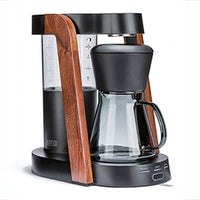 Ratio Eight S2
Ratio Eight S2
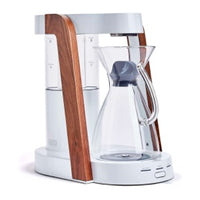 Ratio Eight Original
Ratio Eight Original
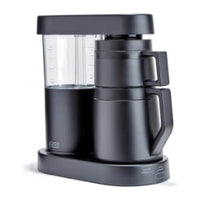 Ratio Six
Ratio Six
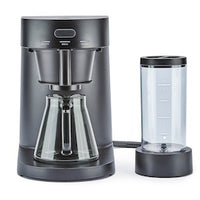 Ratio Four
Ratio Four
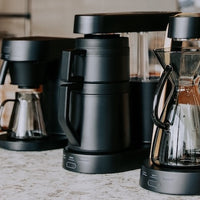 Compare Machines
Compare Machines






